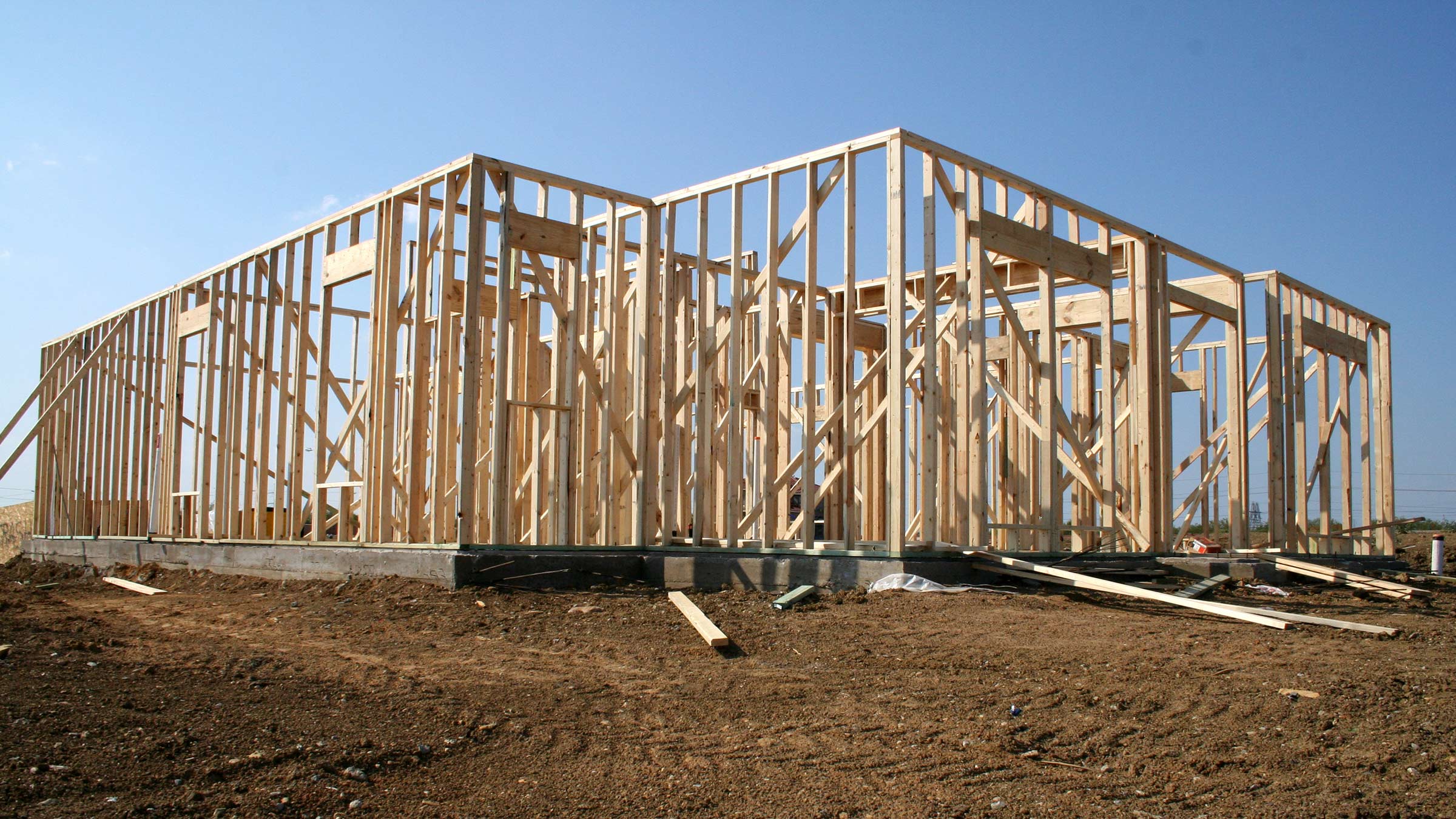The housing market continued its red hot trajectory throughout much of the Ninth District over the winter, yet home builders reporting that they had less revenue than before the pandemic outnumbered those who said they had more, according to the Minneapolis Fed’s February survey of the construction industry.
It says a lot about the industry’s struggles that even its residential segment, which did the best financially, was struggling. In fact, more respondents in every segment reported that the previous three months’ revenue had decreased year over year compared with respondents in the October construction survey (Chart 1).
What happened?
Respondents still had a hard time finding workers, and demand for industrial construction and commercial and nonresidential construction was still soft—about the same percentages of respondents complained about these obstacles—but many more complained about the price of building materials, which spiked by as much as 300 percent.
“Material prices are killing us,” a Twin Cities subcontractor reported. He said he’ll have to absorb the price increase himself on contracts already signed, and getting new contracts is harder with the higher prices.
But there are some positive signs as well. More respondents in every segment reported seeing more projects available for bids in February, which could mean more work in the months ahead. While some of the increase was seasonal, many respondents said they felt a turnaround was at hand.
More than 500 respondents from every Ninth District state took part in the February survey, which was not a random sample and may not be representative of the industry in the district.*
It costs more to build things
Part of the reason revenue is down is that there’s just less work available in all segments other than residential, a consequence of fewer projects being available months ago when contracts on the current work were signed. The intense competition that resulted means what work that’s available is less profitable. But another reason is the skyrocketing price of lumber, steel rebar, PVC pipes, vinyl siding, wiring, and everything in between, which has further dented profits.
Nine of 10 respondents reported some increase in the price of building materials in February relative to February 2020 (Chart 2). A third of respondents said the price increase exceeded 10 percent. Compared with the October survey, more respondents in every segment said prices were higher than a year ago.
Steel was up 20 percent for a South Dakota general contractor in the infrastructure and heavy construction segment and 50 percent for a Twin Cities general contractor in the industrial segment. Lumber was up 110 percent for a Wisconsin concrete contractor and as much as 300 percent for a Twin Cities home builder. Some respondents said the cost of shipping the materials had also gone up; one Twin Cities flooring contractor said it was up 30 percent.
According to news reports, there is a severe shortage of building material nationwide, in part, because factories had to shut down or operate with fewer workers because of the pandemic and, in part, because the shortage of truck drivers continues to get worse.
In northern Wisconsin, one home builder said the higher prices are putting his homes out of reach for many buyers. “We cannot afford to build spec houses at an affordable price, and it is very difficult to secure custom builds with the ridiculous increase in materials.”
Hiring is still hard to do
Finding the right workers and raising wages high enough to hire them continued to challenge the industry in recent months, according to the survey. Seven in 10 respondents said labor availability in February was tight compared with three months ago, virtually unchanged from the October survey. Even in the beleaguered commercial segment, six in 10 said labor was tight.
“It’s bad. There’s no one to hire,” said a residential general contractor in Michigan’s Upper Peninsula. He’s in his 50s with a bad back and instead of managing his firm, he said his main job now is carpenter foreman—“because someone has to do the work.”
Some respondents blame the more generous unemployment benefits provided by the federal stimulus for worker shortages, but a national shortage of construction workers preceded the pandemic. According to news reports, it’s gotten worse because the pandemic has disrupted trade schools, and older workers continue to retire.
Many respondents said in the February survey that they have raised wages since the start of the pandemic though not drastically. Sixty percent said skilled tradespeople received raises, and 48 percent said other workers received raises. But most raises were in the 1 percent to 5 percent range.
A brighter outlook
The rest of 2021 looks brighter to many respondents, who expected more work and more revenue.
Respondents in every segment said there were more projects available for bids and requests for proposals in both the public and the private sectors (Chart 3) in February compared with October. The revenue outlook for every segment improved as well. Asked to compare revenue in the following three months with the previous three months, 36 percent said in February that they expected an increase, compared with only 28 percent in October. Some of this is because construction activities tend to ramp up as the cold of winter fades away. But several survey respondents said they feel a rebound is coming soon and previously hesitant clients are more willing to start projects.
“There appears to be more activity in commercial buildings as businesses are planning for people to return in the June-August time frame,” a Twin Cities heating and air conditioning contractor said. But he added that there were still a lot of bidders driving down prices.
Even with more projects available in February, some respondents reported two to five times as many bidders for each project as before the pandemic. Some questioned if the low prices are even sustainable for the industry. That might be why, even though the revenue outlook is better, it still shows that a majority expect revenue to stay the same or go lower.
A Wisconsin mechanical, electrical, and plumbing contractor for the commercial segment said he has had to bid at “near zero margins” and use federal stimulus money to provide some profit. “We have to do this to compete in the current climate.”
Endnotes
* It’s usually tricky to compare surveys in which respondents are self-selecting because the sample in one survey could be weighted very differently from the sample in another. However, the sample in the February survey is very similar to the sample in the October survey as measured by the percentage in each industry segment, type of firm, and location; for example, 48 percent of respondents in October were in the residential segment compared with 49 percent in February. Only trends that are consistent across industry segments are discussed here.
Tu-Uyen Tran is the senior writer in the Minneapolis Fed’s Public Affairs department. He specializes in deeply reported, data-driven articles. Before joining the Bank in 2018, Tu-Uyen was an editor and reporter in Fargo, Grand Forks, and Seattle.






